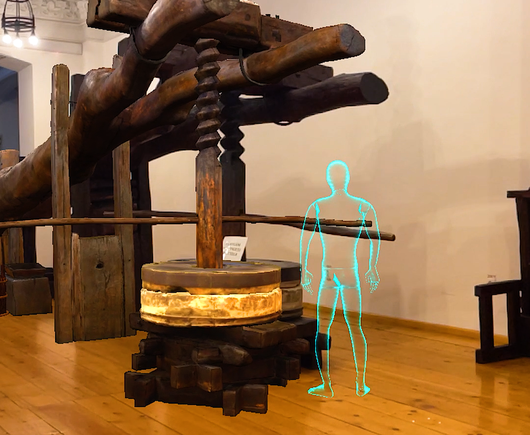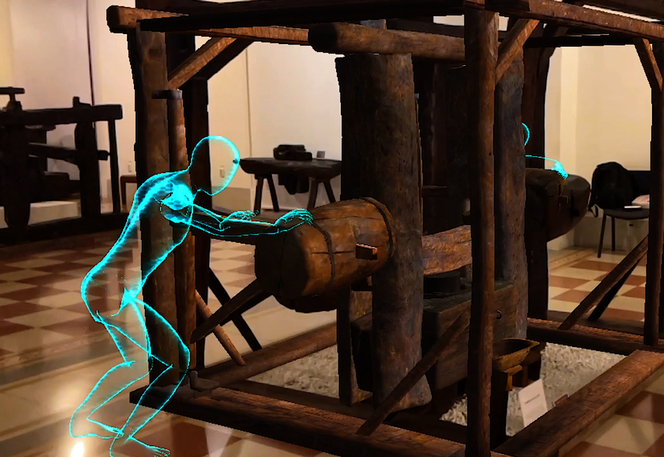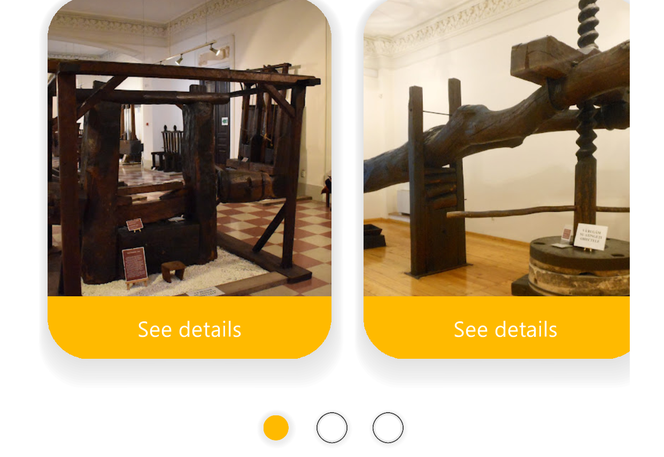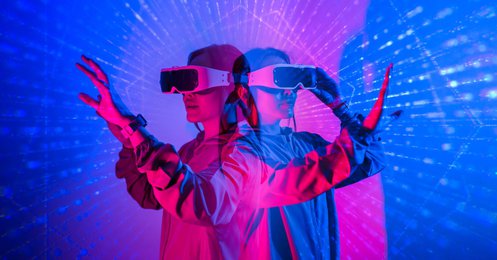The process continued with fully recreating the exhibits in 3D and animating the items to reflect the entire timeline of turning seeds into oil. Ultimately, the characters were created using Kinect devices to capture body movements and then animated to perform the right actions.
Our colleagues enthusiastically collaborated, leveraging their creativity and expertise in extended reality (XR), to craft an immersive experience for museum visitors.
Beyond the novelty factor and the accuracy of the 3D models replicating museum exhibits, the AR application brings numerous benefits to both visitors and museums alike:
- Customization of the Visiting Experience: Visitors have the chance to view the 3D version of the exhibits, enjoy the animated journey, listen to the narrated storytelling, decide what exhibits they want to see using the navigation feature, rewatch the animation or stop it and move to the next one;
- Accessibility of Information: Accessing additional information about exhibits through the phone, eliminating the need to read informative panels;
- Preservation of fragile artifacts through digital replication: By creating digital copies (3D variants) of highly valuable or fragile exhibits, the museum can ensure their preservation and allow viewing without risks, while also providing a clearer and more detailed picture, especially regarding small and complex details;
- Attraction of a tech-savvy younger audience: MuzeAR enables museums to attract a younger audience, passionate about technology, who are more receptive to such experiences.
The MuzeAR application works on both iOS and Android mobile devices, being available for download in their respective store.
To enjoy the AR experience at the Ethnographic Museum, visitors should install the MuzeAR guide on their phones, make sure their internet connection is strong, and follow the instructions in the application.




